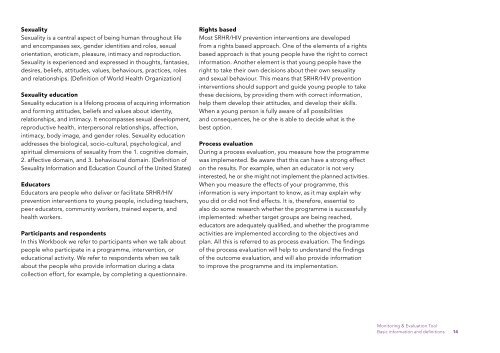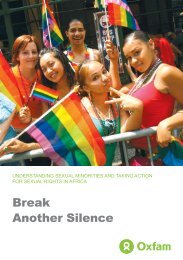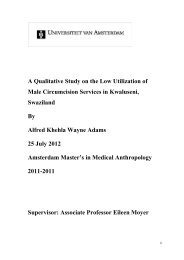ARE YOU ON THE RIGHT TRACK? - Rutgers WPF
ARE YOU ON THE RIGHT TRACK? - Rutgers WPF
ARE YOU ON THE RIGHT TRACK? - Rutgers WPF
- No tags were found...
You also want an ePaper? Increase the reach of your titles
YUMPU automatically turns print PDFs into web optimized ePapers that Google loves.
SexualitySexuality is a central aspect of being human throughout lifeand encompasses sex, gender identities and roles, sexualorientation, eroticism, pleasure, intimacy and reproduction.Sexuality is experienced and expressed in thoughts, fantasies,desires, beliefs, attitudes, values, behaviours, practices, rolesand relationships. (Definition of World Health Organization)Sexuality educationSexuality education is a lifelong process of acquiring informationand forming attitudes, beliefs and values about identity,relationships, and intimacy. It encompasses sexual development,reproductive health, interpersonal relationships, affection,intimacy, body image, and gender roles. Sexuality educationaddresses the biological, socio-cultural, psychological, andspiritual dimensions of sexuality from the 1. cognitive domain,2. affective domain, and 3. behavioural domain. (Definition ofSexuality Information and Education Council of the United States)EducatorsEducators are people who deliver or facilitate SRHR/HIVprevention interventions to young people, including teachers,peer educators, community workers, trained experts, andhealth workers.Participants and respondentsIn this Workbook we refer to participants when we talk aboutpeople who participate in a programme, intervention, oreducational activity. We refer to respondents when we talkabout the people who provide information during a datacollection effort, for example, by completing a questionnaire.Rights basedMost SRHR/HIV prevention interventions are developedfrom a rights based approach. One of the elements of a rightsbased approach is that young people have the right to correctinformation. Another element is that young people have theright to take their own decisions about their own sexualityand sexual behaviour. This means that SRHR/HIV preventioninterventions should support and guide young people to takethese decisions, by providing them with correct information,help them develop their attitudes, and develop their skills.When a young person is fully aware of all possibilitiesand consequences, he or she is able to decide what is thebest option.Process evaluationDuring a process evaluation, you measure how the programmewas implemented. Be aware that this can have a strong effecton the results. For example, when an educator is not veryinterested, he or she might not implement the planned activities.When you measure the effects of your programme, thisinformation is very important to know, as it may explain whyyou did or did not find effects. It is, therefore, essential toalso do some research whether the programme is successfullyimplemented: whether target groups are being reached,educators are adequately qualified, and whether the programmeactivities are implemented according to the objectives andplan. All this is referred to as process evaluation. The findingsof the process evaluation will help to understand the findingsof the outcome evaluation, and will also provide informationto improve the programme and its implementation.Monitoring & Evaluation ToolBasic information and definitions 14





